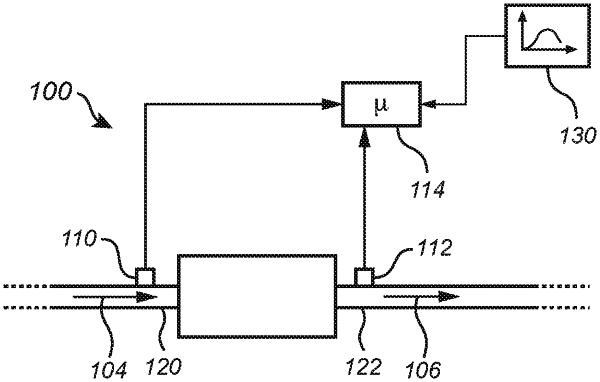| CPC F01N 11/007 (2013.01) [F01N 3/208 (2013.01); F01N 2550/02 (2013.01); F01N 2560/026 (2013.01); F01N 2610/14 (2013.01); F01N 2900/0601 (2013.01); F01N 2900/1402 (2013.01); F01N 2900/1404 (2013.01); F01N 2900/1411 (2013.01)] | 18 Claims |

|
1. An aftertreatment system for a vehicle, the aftertreatment system being connectable to an internal combustion engine, wherein the aftertreatment system comprises:
an oxidation catalyst,
a first NOx sensor arranged upstream the oxidation catalyst,
a second NOx sensor arranged downstream the oxidation catalyst, and
a control unit comprising a processor device configured to:
receive data, from the first NOx sensor, indicative of a level of nitric oxides, NO, in exhaust gas from the internal combustion engine upstream the oxidation catalyst,
receive data, from the second NOx sensor, indicative of a level of nitric oxides and nitrogen dioxides, NO2, in the exhaust gas downstream the oxidation catalyst,
determine a sensor based conversion ratio of nitric oxides to nitrogen dioxides by the oxidation catalyst from the data received from the first and second NOx sensors,
obtain an estimated conversion ratio of nitric oxides to nitrogen dioxides by the oxidation catalyst from a model operative to control a reducing agent injector, the model being representative of a plurality of conversion ratios, wherein each of the plurality of conversion ratios is associated with an exhaust gas condition of the exhaust gas from the internal combustion engine,
determine a malfunction condition of the aftertreatment system in response to the sensor based conversion ratio being different from the estimated conversion ratio, and
perform a responsive action of the aftertreatment system based on the malfunction condition, wherein the malfunction condition comprises a first malfunction condition and a second malfunction condition, the aftertreatment system being exposed to the first malfunction condition when a difference between the sensor based conversion ratio and the estimated conversion ratio is below a predetermined threshold level, and exposed to the second malfunction condition when the difference between the sensor based conversion ratio and the estimated conversion ratio is above the predetermined threshold level, wherein the processor device is configured to, when the aftertreatment system is exposed to the first malfunction condition, perform the responsive action in the form of updating the estimated conversion ratio of the model to an updated conversion ratio, the updated conversion ratio corresponding to the sensor based conversion ratio, and wherein the exhaust gas condition is a temperature and mass flow of the exhaust gas from the internal combustion engine.
|